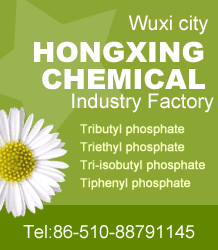Home > Offer to Sell > Organic chemicals and Derivatives > Others > N (Beta-aminoethyl) gamma-aminopropyltrimethoxy-silane
N (Beta-aminoethyl) gamma-aminopropyltrimethoxy-silane
Inquiry
| Post Date: | Aug 26,2017 |
| Expiry Date: | Aug 26,2018 |
| Detailed Description: |
Cas No. :1760-24-3
appearance Clear liquid
Assay 97.0% min APHA ( Pt-Co) 25 Max Density (20°C, g/cm3) 1.010 – 1.030 Refractive Index (25°C) 1.439 – 1.447 N (Beta-aminoethyl) gamma-aminopropyltrimethoxy-silane 1.Adhesion promoter in polysulfide, polyvinyl chloride plastisol, silicone tow-part urethanes and epoxy adhesives and sealants 2. Additive in phenolic and epoxy molding compounds 3. Additive to latex coatings, adhesives and sealants 4. Adhesion promoter in one-part silylated urethane adhesives and sealants based on organofuntional silane SPURSM Technology. Features and Benefits Polyamino functionality 1. Provides reactive site for amino-reactive resins 2. Good wetting of substrates. Trifunctional silane 1. Excellent adhesion to inorganic substrates such as metal, glass etc. 1. Superior adhesion to plastics when employed in SPUR Technology-based adhesives or sealants. Applications It may be used as an additive, eliminating the need for special primers in numerous bonding applications. Specific systems that demonstrate improved adhesion when N (β-aminoethyl) γ-aminopropyltrimethoxy-silane is used are: 1. RTV Silicones and Hybrid Silane-Crosslinked Sealants N (β-aminoethyl) γ-aminopropyltrimethoxy-silane addition to one- and two-part silicone-crosslinked sealants improves adhesion to a variety of substrates, including glass, steel, aluminum and concrete. This silane can dramatically enhance adhesion to a wide array of plastics when used in combination with SPURSM Technology for silylating urethane polymers. (For formulation and silylated prepolymer preparation information, please refer to Literature bulletin #112-026-30, “Silquest Organofunctional Silanes – Crosslinkers and Adhesion promoters for Urethane Adhesives and Sealants.” 2. Polysufide Sealants When added to one- and two-part polysulfide sealants, N (β-aminoethyl) γ-aminopropyltrimethoxy-silane provides better adhesion to a variety of substrates, including glass, aluminum and steel. N (β-aminoethyl) γ-aminopropyltrimethoxy-silane is typically used at a loading of 0.5 to 1.0 percent by weight to the sealant. It disperses well and produces cohesive failure in the sealant rather than adhesive failure of the bond between the sealant and the substrate. Furthermore, the use of N (β-aminoethyl) γ-aminopropyltrimethoxy-silane can eliminate the need forprimers normally required to achieve adhesion to surfaces. 3. Plastisol Sealants Adding N (β-aminoethyl) γ-aminopropyltrimethoxy-silane (0.5 to 1.5 weight percent) as a replacement for polyaminoamide adhesion promoters in plastisol sealants improves bonding to metal substrates. In addition to increased strength, the silane-modified plastisol sealant has better overall appearance than a system that uses polyaminoamide adhesion promoters. N (β-aminoethyl) γ-aminopropyltrimethoxy-silane modified plastisol systems have a very light color, and the cured compound is bubble-free. 4. Additive in Phenolic and Epoxy Molding Compounds N (β-aminoethyl) γ-aminopropyltrimethoxy-silane, as an additive in phenolic and epoxy molding compounds, reduces the water absorption of molded composites. This, in turn, leads to improved wet electrical properties, particularly at low frequencies. High-temperature strength properties are also improved. Package: 20KGS/plastic drum 200 Ltrs/iron drum (N.W.190KG) 1000 Ltrs/IBC drum (N.W.950KG) |
| CAS Registry Number: | 1760-24-3 |
| Synonyms: | ;A0700;Aas-M;Aminoethylamino Propyltrimethoxy Silane;N-Beta-(Aminoethyl)-Gamma-Aminopropyltrimethoxysilane ;N-(2-Aminoethyl)-3-Aminopropyltrimethoxysilane;N-(2-Aminoethyl)-3-(Trimethoxysilyl)Propylamine;N-[3-(Trimethoxysilyl)Propyl]Ethylenediamine;N-(Β-Aminoethyl)- Γ-Aminopropytrimethoxysilane; Silane Coupling Agent Kh-792;Silane Coupling Agent A-1120;3-(2-Aminoethyl)-Aminopropyltrimethoxysilane;N-[3-(trimethoxysilyl)propyl]ethane-1,2-diamine;N-[3-(trimethoxysilyl)propyl]ethane-1,2-diamine hydrochloride (1:1);N-[1-(trimethoxysilyl)propyl]ethane-1,1-diamine;N-[1-(trimethoxysilyl)propyl]ethane-1,2-diamine;N(beta-aminoethyl)gamma-aminopropyltrimethoxy-silane;N-(2-Aminoethyl)(3-aminopropyl)trimethoxysilane;N-(amino-ethyl)-amino-propyl trimethoxy silane;3-(2-aminoethyl)-aminopropyl trimethoxy silane;3-(2-Aminoethylamino)propyltrimethoxysilane;N-(3-Trimethoxysillylpropyl)ethylenediamine;kh792 N-β-(Aminoethyl)-γ-Aminopropyltrimethoxysilane; |
| Molecular Formula: | C8H22N2O3Si |
| Molecular Weight: | 222.3574 |
| Molecular Structure: | ![1760-24-3 [3-(2-Aminoethyl)aminopropyl]trimethoxysilane](https://images.chemnet.com/suppliers/chembase/189/189669_1.gif)
|
| Hazard Symbols: |  Xi:Irritant; Xi:Irritant; |
| Risk Codes: | R38:; R41:; R43:; R52/53:; |
| Safety Description: | S24:; S26:; S37/39:; S61:; |
| Company: | Wuhan Kemi-Works Chemical Co., Ltd [ China ] |
| Contact: | Dr. Allen Zhang |
| Tel: | 86-27-85736489 |
| Fax: | 86-27-85736485 |
| Email: | sales@kemiworks.com; info@kemiworks.net |
-
Disclaimer statement:The information and data included above have been realized by the enterprises and compiled by the staff, and are subject to change without notice to you. The Chemnet makes no warranties or representations whatsoever regarding the facticity, accuracy and validity of such information and data. In order to ensure your interest, we suggest you chose the products posted by our gold suppliers or VIP members.

-
- Meropenem Crude
- 4-Bromo-4'-(diphenylamino)...
- N,N,N',N'-Tetrakis(4-methy...
- N,N-Diphenylbenzidine
- 1-Allylnaphthalene
- 9-Bromo-10-phenylanthracen...
- 9-[1,1'-Biphenyl]-4-yl-10-...
- 2,5-Dibromothiophene
- 3,4-Dibromothiophene
- Polystyrene sulfonic acid(...
- Perfluorobutanoicaid
- 3,4-Dimethoxybenzaldehyde
- 4,4'-Dibromobiphenyl
- N-(2-Aminoethyl)-3-aminopr...
- 3-Methylbenzyl alcohol
- 2-Acetylfluorene
- 4-cyanobenzoic acid
- 2-Nitro-9,9-dimethylfluore...
- 3-Iodobenzoic acid
- 2-Iodobenzoic acid
- 4-Hydroxycoumarin
- Chrysene
- 4-Iodobenzoic acid
- 3-Bromo-2-furaldehyde
- Methyl 6-bromo-1H-indole-4...

